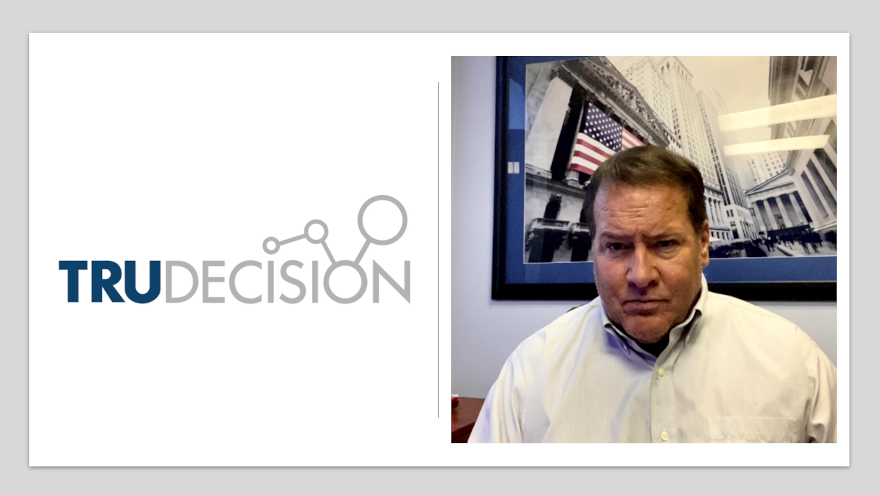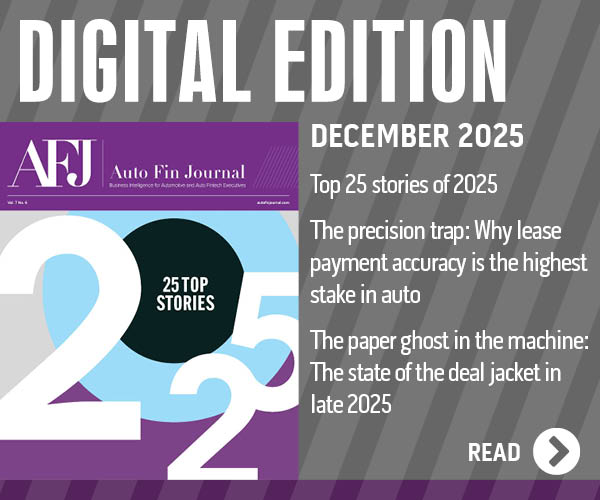AutoNation Finance launches, fueled by TruDecision partnership

TruDecision CEO Daniel Parry. Images courtesy of the company.
By subscribing, you agree to receive communications from Auto Remarketing and our partners in accordance with our Privacy Policy. We may share your information with select partners and sponsors who may contact you about their products and services. You may unsubscribe at any time.
TruDecision CEO Daniel Parry elaborated about the current state of the auto finance market in conjunction with an exciting development for his company that was one of the first Emerging 8 honorees in 2019.
On Tuesday, TruDecision announced that it’s expanding its partnership with CIG Financial, an AutoNation company that will be rebranded as AutoNation Finance.
TruDecision now will be building captive financing business for AutoNation Finance by delivering sophisticated modeling and analytics. It’s what Parry sees as a key component in the AutoNation Finance’s competitive program offering.
TruDecision provides a “revolutionary” analytic platform as a service, where highly sophisticated models are rapidly deployed to transform financing strategy. The company, founded by seasoned auto finance and analytic technology executives, focuses on driving bottom line results by linking the lender’s unique operational approach to quantitative tools that achieve significant performance improvement.
“Models should never be created in a vacuum”, Parry said in a news release. “In order to achieve meaningful results, these tools must be developed with a deep understanding of the business environment within which they are deployed. We are proud to partner with a top organization like CIG that embraces a quantitative approach to propel performance and the dealer experience to the next level.”
On July 21, AutoNation announced an agreement to acquire CIG in order to extend its relationship with its customers to include the entire vehicle ownership cycle.
Subscribe to Auto Remarketing to stay informed and stay ahead.
By subscribing, you agree to receive communications from Auto Remarketing and our partners in accordance with our Privacy Policy. We may share your information with select partners and sponsors who may contact you about their products and services. You may unsubscribe at any time.
“We have always been recognized by our commitment to bringing value to our dealer partners in order to help them achieve greater sales,” CIG Financial president Jeff Butler said in the news release. “As we expand to serve AutoNation dealerships, this becomes more important than ever. The ability to offer highly competitive terms on more approvals is a critical part of delivering on that commitment.
“The team at TruDecision not only offers best-in-class solutions to help us achieve this, but their substantial experience as auto lenders enables us to seamlessly integrate their models into our existing operations,” Butler said.
What kind of market is this company entering now as AutoNation Finance? Parry responded to four questions from Auto Fin Journal, dissecting the current landscape as well what might be ahead.
Auto Fin Journal: Stemming from your contacts and conversations, how much are finance companies tightening their underwriting? What’s triggered them to make changes?
Daniel Parry: There has not been a widespread tightening, as many are still trying to grow. Having said that, there are cases where some of the smarter lenders are recognizing changes in their portfolios and are taking steps to shore up underwriting on the weakest applicants that fit their funding profile. We advise lenders to get on this now, and to do this surgically. You don’t have to reprice or rewrite your entire strategy, but target applicants who have the most debt exposure in the lowest tiers. If lenders pay attention to where they are unnecessarily losing good deals, they can actually improve credit performance and grow at the same time. For those that have made changes, the trigger has been an increase in delinquency and the incidence of loss above what one would expect seasonally this time of year. I say the word “incidence” regarding loss, because actual net dollar losses are low due to unusually high vehicle recovery values — which will not last forever.
AFJ: And how do they feel about their current portfolios? How solid is the paper that’s arrived in the past 24 months?
DP: Most of the lenders I speak to feel very good about what they have booked in the past 24 months. There immediate concern is buffering for shifts in performance that are inevitable. Recessions, and other setbacks, expose weakness in underwriting when we think times are good, as in 2006 and 2019. When the market is frothy, lenders may stretch for volume. This usually shows up in too much car and too much payment for consumers who can barely afford it. When the economy shifts or inflation shows up, performance deteriorates. However, during a crisis lending tends to be contracted. Lenders raise standards and price and produce very lucrative portfolios. In 2020-2021, delinquency and loss dropped by around 20% on average due to the fact that there was so much forbearance in the market. Deferred auto, rent, student loan and credit card payments along with stimulus put the consumer in a good position. As that forbearance has evaporated, performance has to move back to a normal baseline. What has been booked in the last two years is solid as it is, but lenders must make sure economic factors don’t push that shift too far past that baseline or their access to lending capital could be impaired.
AFJ: How have you and the TruDecision team sharpened your client tools to help users feel more confident about the paper that’s going into their portfolios?
DP: Credit is always a moving target, which is why we tend to be very high touch with our customers. Many lenders rely on black box models that overfit yesterday’s world as if it is a perfect projection of tomorrow’s. While it is critical to have sophisticated models, sharpening the tool — or the prediction as it were — really involves understanding where the lender should go beyond the score. This includes integrating economic and market factors, competition, program execution and in-depth performance tracking, and linking those elements to a competent loss forecast. With the latter, the lender can see and make adjustments in real time to protect performance and ensure a healthy closure rate. The number one reason lenders struggle is that they do not get out in front of performance issues early enough to affect timely change. We are very focused on those early warning metrics that allow them to do that.
AFJ: What do you see at the top factor impacting auto financing in 2023 and why?
DP: Many would expect my answer to be falling vehicle values, but it is not. Inventory shortages take time to correct, so there is not a recovery cliff coming. We will see values fall over the next 12-18 months, but those are offset with new originations that are adjusting to the current auction trends. Values will drop, and it will have an impact that is spread over many months leading to a gradual return to historical recovery rates. The top factor in the near term (i.e., 2023) is really the debt stressed consumer in a recessionary environment. Many subprime lenders that have been at $17,000-$20,000 average amount financed have been booking deals at $25,000-$30,000 amount financed. Average payment has gone up more than $100 over pre-pandemic levels. The effect of inflation in all segments of the economy are hitting consumers hard. While unemployment is low now, due in part to a lower participation rate, it will likely increase. A portion of consumers with the highest debt loads and large payments on a vehicle that is rapidly depreciating will turn in their car or trade down. I am not predicting a meltdown event, as some often due regarding auto finance; however, lenders that don’t tighten up on some of these already stretched consumers in their lowest risk tiers will see performance deteriorate. For lenders who utilize warehouse debt facilities, their borrowing base will shrink causing them to either cut volume or come up with more equity to keep funding at the same pace. This is not an inevitable outcome, but I strongly recommend lenders take a close look at where they are exposed on this issue and take preventative measures.


